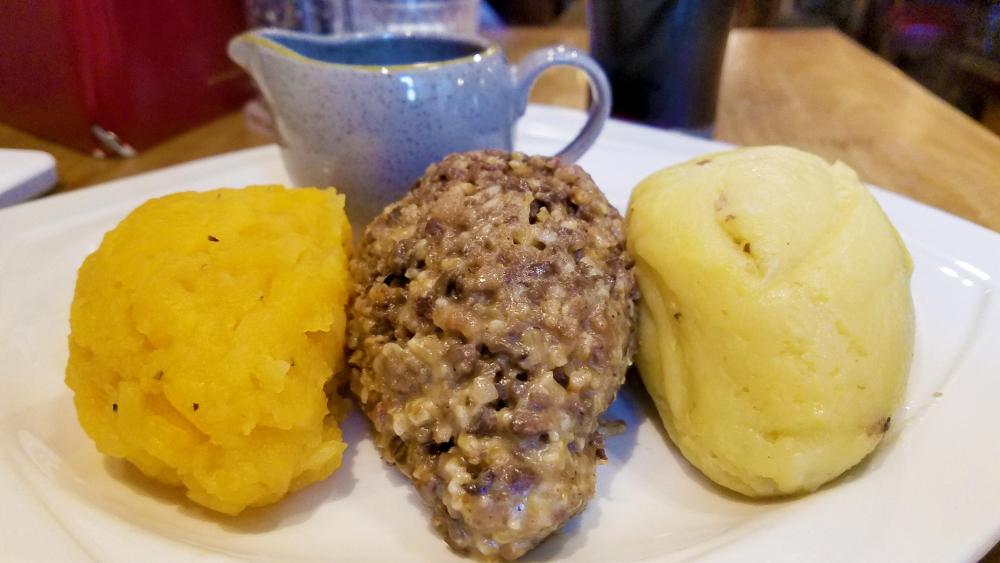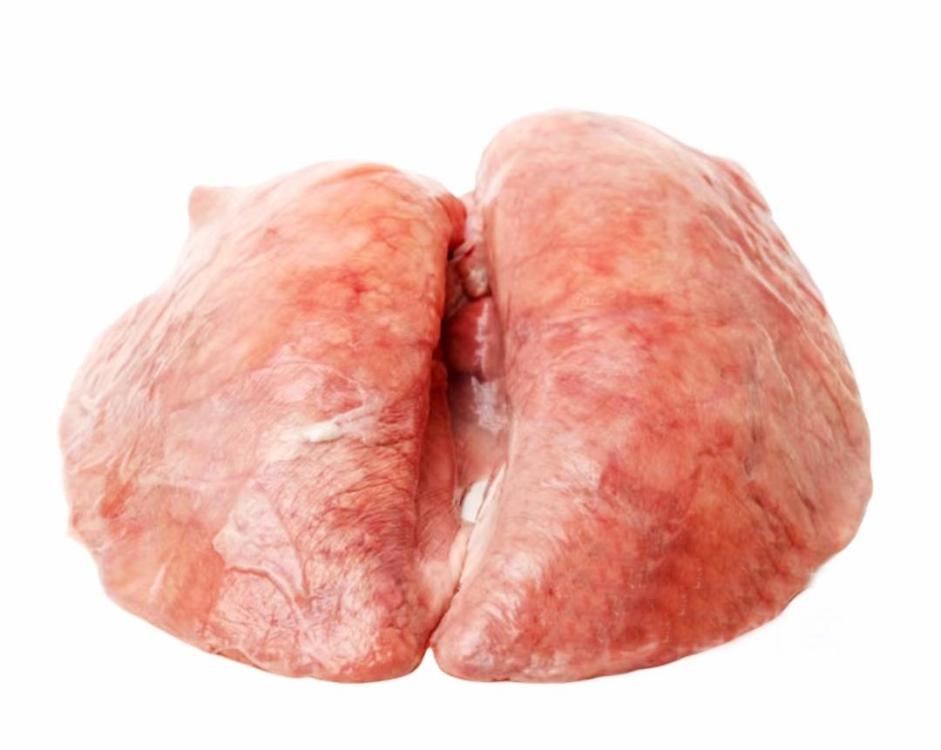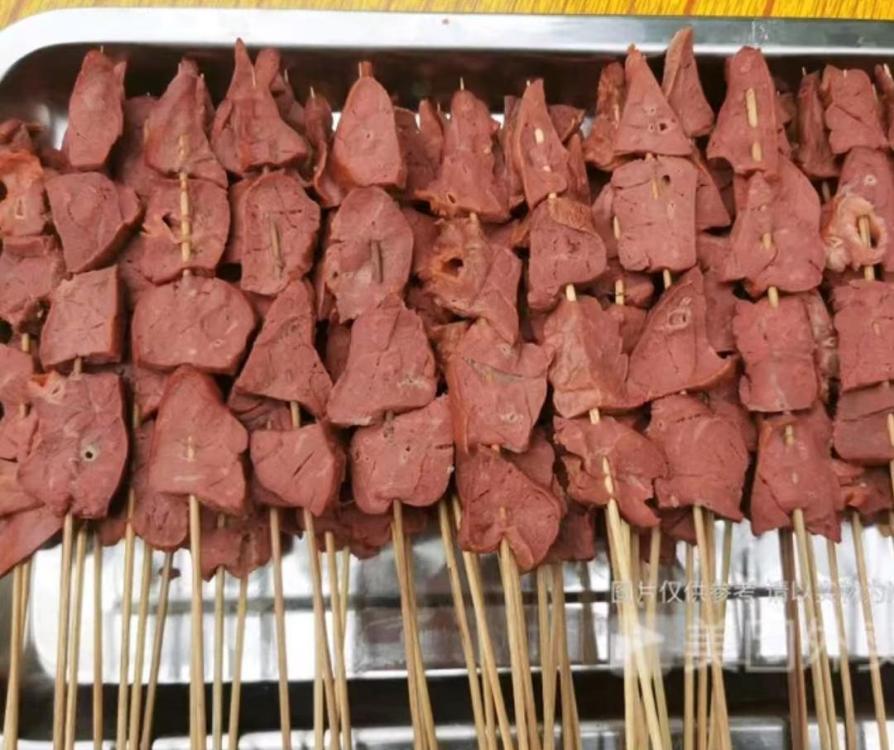I’m thinking few, if anyone here will be gracing the dinner table with this any time soon. In fact, for most members, it would involve a degree of criminality! In the USA, as I understand it, it is legal to consume this foodstuff, but illegal to import or sell it.
Lungs have never been mainstream in the Anglophone nations or in western culture in general (with one honourable exception). Yet, they are common enough in Asian cultures, even appearing as a street food speciality in places.
The exception, of course, is in Scotland with the ‘Great Chieftain o’ the Puddin-race!’, my beloved haggis.
QuoteA dish consisting of the heart, lungs*, and liver of a sheep, calf, etc. (or sometimes of the tripe and chitterlings), minced with suet and oatmeal, seasoned with salt, pepper, onions, etc., and boiled like a large sausage in the maw of the animal.
OED
* referred to as ‘lights’ when used in the culinary sense. Usually from sheep.
Haggis (Centre)
Here in China, the Sichuan dish 夫妻肺片 (fū qī fèi piàn) is justly famous. This literally means ‘man and wife lung slices’ and consists of beef offal including the tripe, heart, tongue and skin, but is notable for containing zero lungs! Fuchsia Dunlop explains in her The Food of Sichuan (eG-friendly Amazon.com link) that the dish is misnamed , probably because of confusion over similar sounding Chinese characters.
But all is not lost.
Pig's Lungs
猪肺 (zhū fèi), pig’s lungs are easily available and used in soups and other dishes. These can seem alarmingly large, especially when they are soaked to clean them, but they quickly deflate when cooked and become more manageable. Cleaning the lungs is particularly important and it is best to pump water through them until it runs clear. This can take time and several changes of water. Masochists could seek out a recipe for 杏汁猪肺汤 (xìng zhī zhū fèi tāng), Cantonese almond soup with pig’s lungs. More sensibly, find it in a Hong Kong restaurant. This dish is notoriously difficult to prepare and requires around two hours just cleaning the lungs.
Or you can do what I do; let someone else do the work. Lungs are cleaned, prepared and cooked as snack food on the streets and in some supermarkets.
Lungs on sticks
Not bad, but I'm sticking with my haggis.





